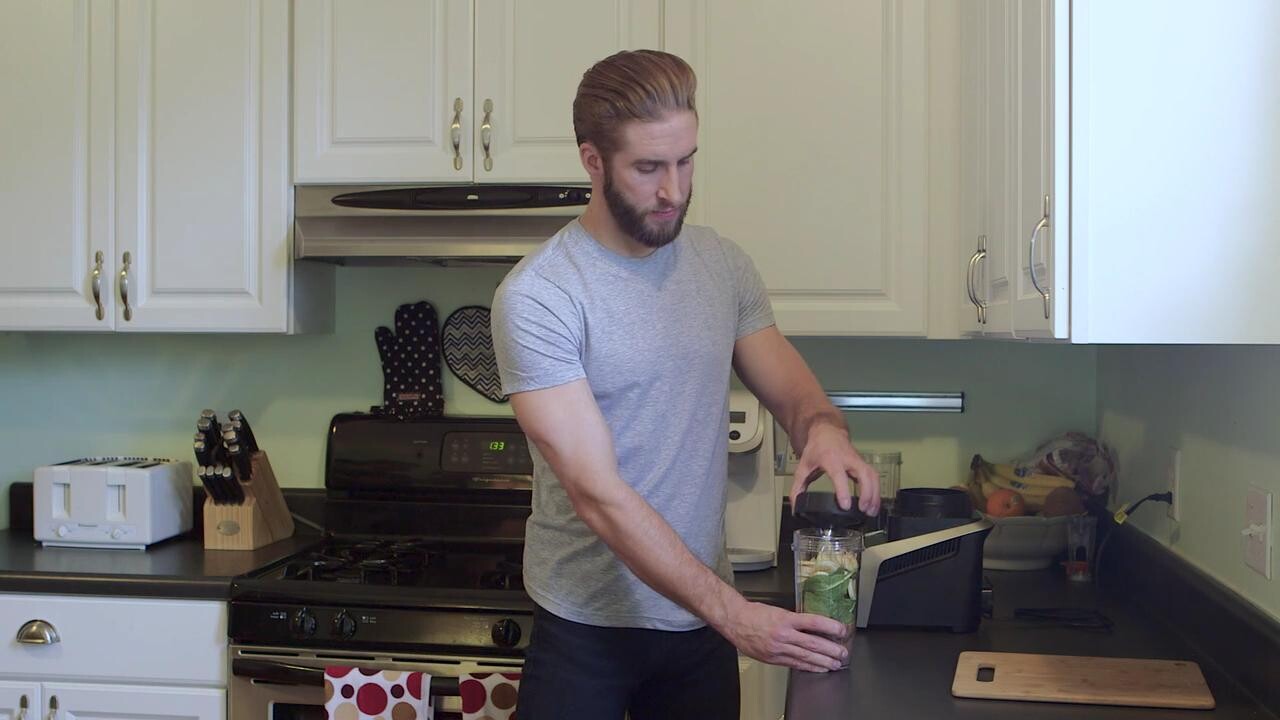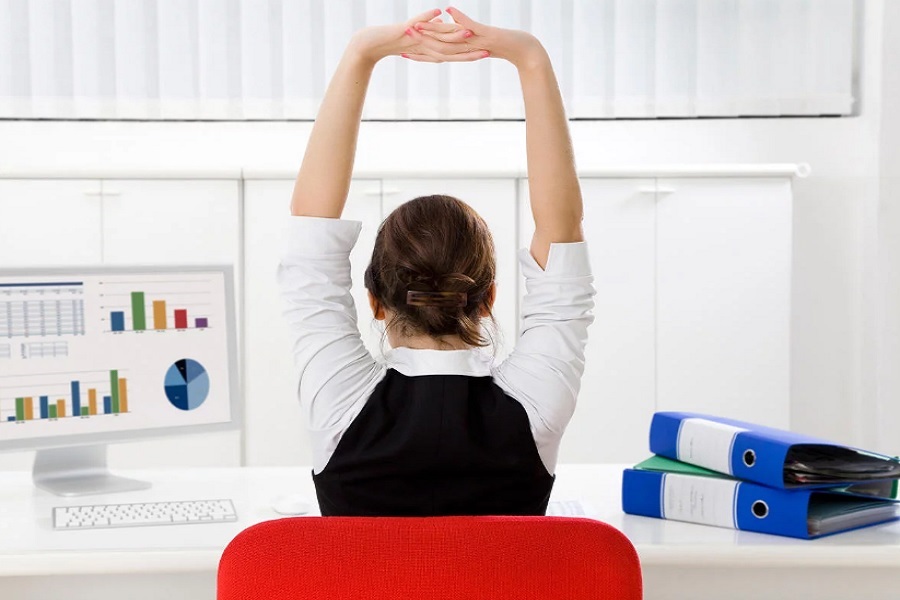A physical therapist weighs in on what exactly happens to your body when you sit all day, and what you can do to stay injury-free.
You’ve probably heard it—sitting all day behind a desk is bad for your health. The more sedentary you are, the higher your risk for obesity-related diseases such as type 2 diabetes and heart disease. Fortunately, regular physical activity ranging from 30 minutes to an hour each day has been proven to decrease the health risks of sitting. However, if you think that hitting the gym hard in the morning means a free pass to glue yourself to your office chair all day, think again. Regardless of your workout intensity, sitting for long stretches of time can predispose you to exercise injury that can keep you from the gym altogether. Why?
We asked Emmi Aguillard, PT, DPT, FAFS, physical therapist at Finish Line Physical Therapy in New York City to weigh in on what prolonged sitting actually does to your body. “Human beings were simply not designed to spend eight hours a day hunching over a computer,” says Emmi. “When we spend so much time during the day being sedentary, our glutes—which are meant to be the power-drivers for most high-intensity exercise—forget how to work.”

Sometimes called ‘sleepy butt syndrome,’ weak glutes (short for gluteus maximus), encourage poor posture by pulling our bodies into an awkward, forward-flexed position. Sitting for long periods of time neuro-inhibits or “turns off” key muscles in your core, hips, hamstrings, and glutes—the muscles we need for running, cycling, and more. In fact, many of Emmi’s patients balance long hours behind a desk with intense exercise, such as training for a marathon. Some of the most common injuries she treats are tendonitis in the knee and achilles as well as lower back pain, all of which stem from poor mobility and weakness in the hip, core, upper back, and glutes. Injury can happen, Emmi explains, when your body compensates by using muscles that aren’t designed to take the impact from higher intensity exercise.
“By working to loosen up our joints and strengthen the muscles that make up our core and hips —the very muscles that sitting tries to weaken—we can work towards keeping ourselves injury-free,” asserts Emmi. Below, she recommends five easy exercises and drills designed to “wake up” the muscles that prolonged sitting weakens. For many of us who follow the “work hard, play hard” philosophy, finding time to take care of our bodies is even more critical. With busy work weeks and other responsibilities that cut away our free time, we know it’s easier said than done, but give your body a little extra TLC and we promise you won’t regret it. Set small goals, recruit a buddy to hold you accountable, and before you know it you’ll be on the right track to staying injury-free.

GETTY IMAGES: UNDEFINED UNDEFINED
1. Move, move, move (as often as you can!)
Yes, it’s as simple as it sounds. Taking little steps to re-engage your muscles after stints of sitting can have huge benefits. Emmi recommends standing up from your desk at least every 30 minutes throughout the day, whether it’s refilling your water bottle, taking a lap around the office during a phone call, or even hovering above your chair and doing 10 squats. She also encourages her patients to hold walking meetings when possible.

2. Hip flexor stretches
If you’re planning to exercise after work, focus on keeping your hips loose throughout the day. Open up your hip flexor (located at the front of your hip where the thigh meets the pelvis) so that you’ll be better able to engage your hamstring and glutes during your workout. Try this one while standing at your desk—take a staggered stance with one foot in front, then rock your hips forwards and backwards. Make sure you feel a stretch in your hip flexor. You can also incorporate lunge matrix stretches with the help of a chair, but you can also do them at home in the morning or evening. These exercises encourage your body to move in different directions and can help increase the range of motion in your hips.

3. Arm reaches and shoulder squeezes
A.K.A. anti-slouch exercises. “When we spend so much time sitting at our desks with poor posture, our head creeps forward and our shoulders tense up,” Emmi says. “Those little aches and pains you may feel during the day from slouching over your keyboard are your body’s way of signaling to your brain that it’s time to move.” Relieve tension by doing 10 simple shoulder squeezes every hour at your desk. Overhead arm reaches, which you can do from your office chair, are also an easy way to incorporate more movement into your daily routine. If you’re into physical activity that relies on a repetitive overhead motion, such upper body lifting or swimming, these exercises can help protect against rotator cuff tear or shoulder impingement injuries.

4. Foam rolling
Emmi highly recommends using a foam roller to give sore muscles a little extra love. “It’s a great way to iron out all the kinks in your muscles and connective tissue after sitting at work or after hard exercise. Think of it as ‘soft tissue hygiene.’ Just like we are taught to brush our teeth every day, it’s important that we take the time to care for our joints and muscles.” Proper technique is crucial—to learn how to do it right, consider taking a foam rolling class at your local gym or pilates studio. We like TriggerPoint foam rollers—find them on Amazon or at your local running store.

5. Yoga, pilates, or barre
“Many yoga stretches are centered around stretching out the hips, engaging your core, and breathing properly,” says Emmi. She also recommends pilates and barre to her patients, both of which are great for targeting and strengthening specific muscles. “Pilates promotes better posture and a stronger core in a low-impact way, while barre can help your body reconnect with your glute muscles.” If you don’t have access to a yoga studio, you can easily practice at home—there are plenty of free instructional videos online. Find a quiet spot, roll out your mat, and tune in.
Source: cookinglight

